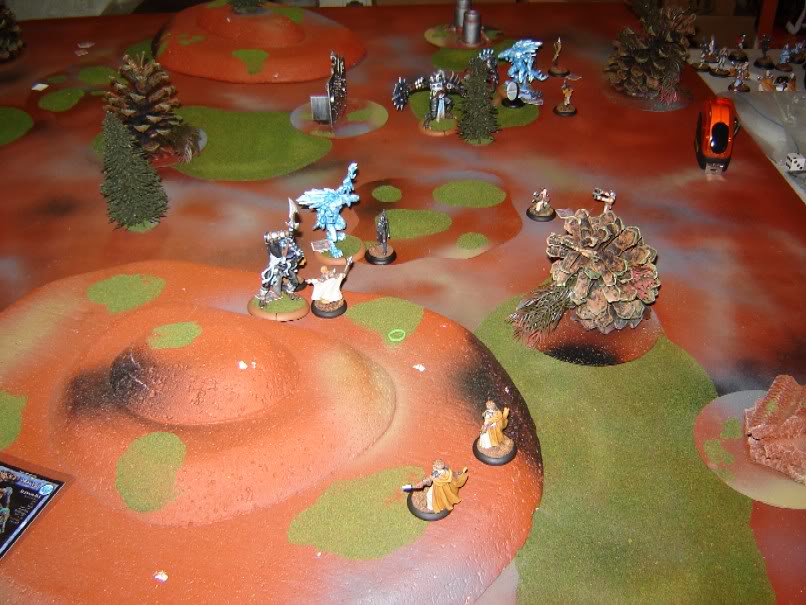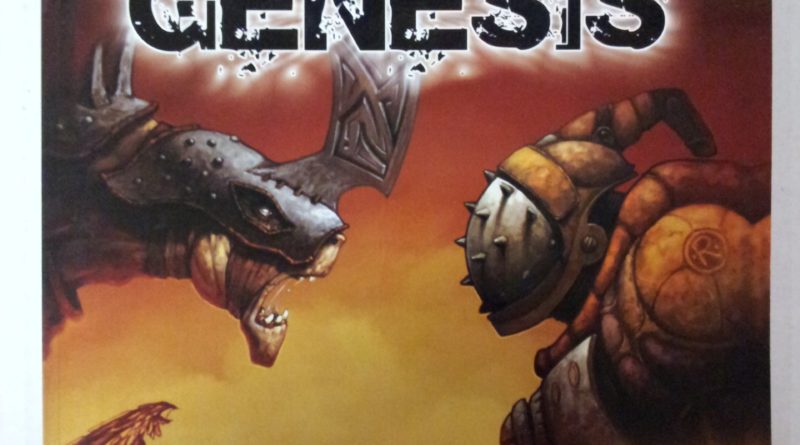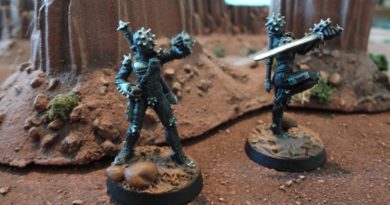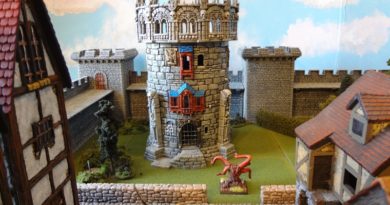Dark Age – The Game Itself
Dark Age is hands down my favorite miniature war gaming system. Most of it boils down to Dark Age’s rules, though there are parts of the concepts and the actual miniatures themselves that I find appealing as well. That said, I have not played a game of Dark Age Apocalypse yet.

Rules to Die For
Alternating Activations
Both Warhammer and Warhammer 40k feature turn-based combat. I move all of my units, my units enter the Magic Phase and/or Shooting Phase, until finally you, the opponent, might get to make some choices in the Assault phase. Some units change this. Yes, you “get” to make Armor Saves, assuming you are able to. Maybe you will test for Leadership during your opponents’ Shooting Phase. Likewise in Warmachine there are now a number of units that activate in your opponent’s activation, but you can still spend a whole lot of time during your opponent’s turn watching and waiting. In both companies’ systems, who goes first in each turn is also static. ABABABABABAB.
Against this backdrop games like Dark Age, Confrontation, Star Wars Minis, and AT-43 mix things up with you and your opponent alternating activations by units. Who is going to go first this round? In Dark Age, you roll Initiative (similar to Star Wars Miniature Battle). Low roll gets to decide WHICH unit on the board will activate. You can pick your own or your opponent’s. This adds another tactical element to play. After your opponent activates a unit, you activate a unit, until one of you runs out. Your unactivated forces can react with their Action Points as the battle unfolds.
Action Points
As equally important as Alternating Activations, each model is assigned a number of Action Points. How you use those AP is up to you. If all you want to do is move forward, spend all 3 or 4 AP to do so. Have a ranged weapon and no RF (Rate of Fire) number restricting your choice, fine, spend all your AP shooting away. Likewise with melee combat. This is done on a model by model basis as well. One member of your unit can spend 2 AP advancing and then Charge (more about Charging below) and spend his remaining AP fighting the enemy. The second member of your unit can spend his AP shooting at the enemy. The third can charge up and attack and so on. It is true a skirmish level game in this sense.
With Action Points there is none of this nonsense of your squad shooting at a nonexistant target blown away seconds ago or being forced to charge thin air.
Action Choices
The variety of actions you can perform in Dark Age with your figure’s Action Points advance the game considerably. You can Go Prone, dropping to the floor to protect yourself against ranged attacks and then slowly move forward. You can Climb up the sides of cliffs and builds. Want to make an Aimed shot with your malfunctioning hand cannon? Spend an AP and go for it.
Charges and Ganging Up
When you Charge you get a bonus AP. You might spend 2 AP getting a model near enough to charge. Your third AP you spend resolving the Charge with a +1 modifier to your Attack Skill and the Power of your Attack. THEN you get a whole bonus AP. If you wipe your opponent with the initial charge, feel free to Charge his unfortunate ally a couple of centimeters away! Then you get another bonus AP.
Ganging Up is a great way to take down hard targets. For most units in the game, for each ally engaged in melee, you get a +1 to both Attack Skill and +1 to Power, which is cumulative. If you have 3 allies in combat with an Ice Elemental and you charge, you have a +3/+3 from Ganging Up and a +1/+1 from Charging. Better hope that attack stops him cold. Unfortunately puns are not a way of life in Samaria. So with Ganging Up even the lowly Dragyri Slaves serve a purpose.
Attack Resolution
The last aspect of Dark Age’s rules that I like is how attacks get resolved. Model’s have an Attack Skill with whatever weapon or weapons they have. An AS of 10 is brilliant, but many have numbers closer to 5 or 6. You add any modifiers to your AS as well as your target’s DF (Defense). DF is a mixture of size and agility. While there are a few surprising DF’s in the game, models that look like ninjas and anorexic Uma Thurmans typically have DFs around 2. Big lumbering giants with names like Ice Elemental (8), Abomination (8), Warhead (6), and Raze (8) and support or caster types have high DFs. The result of all of your addition is the number you need to roll EQUAL OR LESS than on your d20 to hit them, with 1s being Critical Successes and 20s being Critical Failures and sometimes causing Malfunctions.
So you’ve hit your opponent. Now your opponent take the Power of your weapon, with any bonuses from Ganging Up or Charging or other abilities. He or she subtracts that from the target’s Armor and your opponent tries to roll lower under that target to make his Armor check. The actual game uses different terms for some of this, but it is a great way of representing certain things in the game. This roll also can have a Critical Success or a Critical Failure. Rolling 20 on your Armor means you take an additional point of damage with a 1 negating the attack entirely. Some abilities can change this, but that is the essence of Dark Age and attacks.
Fluff, Game and World Concept, Models
I am largely indifferent to the world of Samaria, where the action of Dark Age unfolds. There are some neat premises built into the world, but I would happily play Dark Age with a more advanced setting or a medieval one. It does cater to that small part of me that enjoys Mad Max (and even Waterworld) and other post-apocalyptic settings such as the world of Fallout.
On the other hand, I’m not at all indifferent about Brom’s artwork. The game is based on it. I first noticed Brom’s stuff back with Dark Sun and some Dragon Magazine covers. He is easily in my Top 5 fantasy artists. I love the skin tones on his figures, as well as his mixture of chunkiness with frailty. Anything Brom-derived is pretty awesome in the game. The rest of the artwork is hit or miss.
The artwork translates into the miniatures. Concepts designed by Brom usually result in great sculpts. Nathaniel and Orchid are both great models and I think someone else drew them. In its infancy the game was also comparatively cheap, just as Warmachine was. You could play a lot of small games for $40-50.


